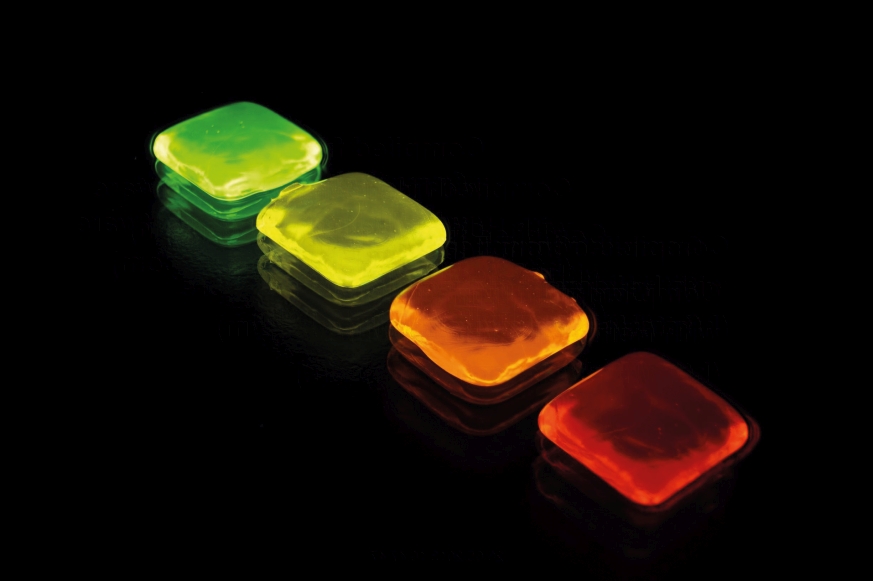White LEDs, which consist of a combination of a blue LED and a yellow-emitting phosphor, often produce a »cold-white« colour impression, as compared to conventional lighting, due to the lack of red light component. In addition, some of the currently-used phosphors show degradation due to heat generation by the high operating currents.
New phosphors on the basis of luminescent glasses, doped with lanthanide ions, should significantly increase the operational lifetime of white light-emitting diodes and ensure a long-term stable colour impression. The luminescent glasses are characterized by an increased chemical and thermal stability as well as allow for specific emissions, depending on the lanthanide ions used. By selecting and combining several lanthanide ions, it is possible to produce a wide range of colours and colour temperatures.
The challenge regarding white LEDs consists in finding the right combination of LED and phosphor so as to produce the desired white light. The colour evaluation is carried out using the well-known CIE diagram. The colour coordinates of the white LEDs should as closely as possible match those of the natural light sources. As such, the emission of the phosphor as well as that of the blue LED must lie opposite of each other in the CIE diagram. Terbium and europium are particularly suitable for use in lighting technology. They display an intense emission in the green (terbium) and red (europium) spectral ranges under ultraviolet (UV) / blue light excitation. By simultaneous doping of these two lanthanide ions, the entire colour spectrum from red to green can be achieved.
